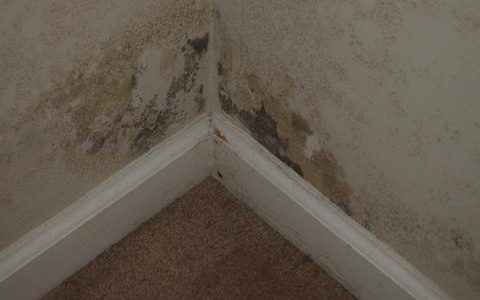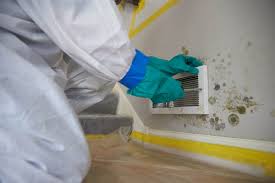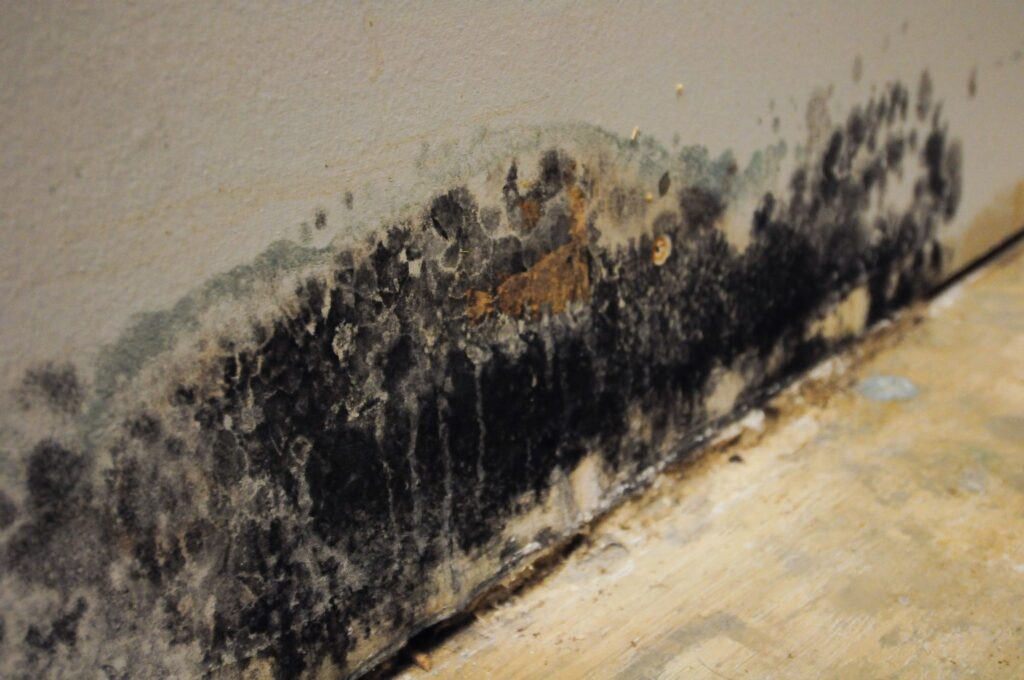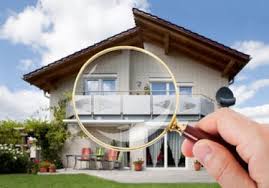WELL WATER TESTING
Well Construction & Maintenance
Correct well construction together with continued maintenance are essential for the safety of private drinking water wells. Information on proper well construction can be found with the water-well contractor licensing agency, local health department, or local water system professionals.
Placement and construction of new wells must meet state and local regulations and may be surveyed by the local health department. There are strict rules about locating drinking water wells near drain fields, livestock and septic tanks. The locations of wells should be such, that rainwater flows away from it. Bacteria and chemicals on the land’s surface may be picked up by rainwater and transferred to the well, resulting in contamination.
Private wells are not protected by the Safe Water Drinking Act as the EPA’s rules only apply to public drinking water systems. Primary responsibility lies with the individual well owners to ensure the safety of the water drawn from their wells. The government’s health protections for water systems complies with federal and state regulations of frequent analysis, testing and reporting of results and does not benefit private household wells.
3 Reasons You Should Test Your Well Water
Are you wondering whether or not to get your water tested? Here are a few reasons:
1. Pregnant women, nursing women, infants, and elderly are more susceptible to illness and, therefore, should avoid suspicious water sources.
2. Bad water worsens certain health issues. For example, the bacteria found in unfiltered water can exacerbate gastrointestinal problems.
3. Chemicals and contaminants can seep in. Water sources located near farms, factories and waste disposal sites may become contaminated with dangerous pollutants.
Well Water Testing
We can help you discover the facts about the quality of your well water. Our inspectors can test your water for bacteria and nitrates as well as any other contaminants. We will provide you with the information you need to keep your family safe.

Water Testing
You rely on water for hundreds of uses each day. It’s important to know that it’s safe. You immerse your body in water when you bathe. You inhale steam when you shower and you give water to your pets. Water quenches your thirst and you use it to prepare even the simplest meals. If your water supply contains harmful contaminants, you need to know so you can take steps to eliminate the problem.
water testing service helps you feel more confident about selling or buying a home. If you’re preparing to market your home, you can take steps to eliminate any problems we find. If you’ve made an offer on a home, your water potability results can help you decide whether or not you should go through with the deal.
Comprehensive Water Testing
inspector takes samples at your home and delivers them to a certified testing lab for analysis. Depending on a home’s water source, the water may be subject to a number of different contaminants. For more meaningful results, we tailor our testing to the source.
City Source Water Testing
Basic profile test – This test panel includes results for coliform E.coli bacteria, chlorine, chloride, fluoride, nitrite-N, nitrate-N, pH, odor, color, turbidity, calcium, magnesium, total hardness, iron, manganese, sodium, sulfate, and copper.
Lead – The lead in a home’s water supply may be due to plumbing or water lines. Because it’s odorless, colorless, and tasteless, testing is the only way to detect lead. Exposure may cause physical and developmental problems.
Well Water Testing
Basic profile
Lead
Arsenic – High arsenic levels in a well water supply can be a result of drilling a well through bedrock. Arsenic is a known carcinogen with no smell or taste. Testing is the only way to determine its presence.
Uranium – Deep bedrock wells are susceptible to contamination by naturally occurring uranium. Uranium can cause kidney damage and testing is the only way to determine if well water is uranium free.
Radon – Radon is a radioactive gas which occurs naturally in local soil and rock. It’s a known contributing factor to lung cancer. As its colorless, odorless, and tasteless, testing is the only way to confirm radon in a water supply.
Volatile Organic Compounds – VOCs in water may contain carbon, hydrogen, and other elements. You may notice an odor in the air as they vaporize. VOCs may cause a wide range of adverse health effects.
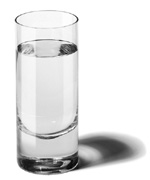
Water Testing
For the public’s protection, Congress enacted the Clean Water Drinking Act in 1974 and strengthened it in 1986, setting minimum water quality standards for most homeowners. Unfortunately, however, there is no guarantee that all utilities comply with the regulations.
Enforcement is difficult on national, state and local levels; not all known contaminants are on the list; and all testing isn’t necessarily accurate. Having your water tested will let you know if there is lead in it or if it contains other contaminants. If lead levels are greater than 15 parts per billion (ppb), action is highly recommended. Testing is the only way to tell if there are harmful levels of lead or other contaminants in your drinking water.
YOU SHOULD CONSIDER TESTING YOUR WATER IF:
-You use water from a private well. Germs and chemicals can get into your well water and contaminate it in different ways. Some germs and chemicals occur naturally. Heavy metals like arsenic, lead, and cadmium are naturally found in rocks and soil and sometimes seep into ground water whichs ends up inside your well water. Other contaminants come from human and animal waste resulting from polluted storm water runoff, agricultural runoff, flooded sewers, or individual septic systems that are not working properly and will seep into your well water. I’d want to know my drinking water is safe, so testing on it an annual basis will keep you and your family from becoming sick from your well water.
-Your home has lead pipes (pipes are a dull gray color, soft enough to be scratched with a knife or key). Your home inspection report will always indicate the type of pipes that are supplying your water.
-Your home has older copper plumbing and / or chrome-plated or brass fixtures.
-You see signs of corrosion from your water (frequent leaks, rust-colored water, stained sinks, dishes or laundry).
Home Inspections will gladly draw a sample of your tap water and have our independent certified lab analyze your water for any unhealthy levels of contaminants. I will contact you with the water test results within two days. (Pricing does vary. Simply click “Optional Services”, then scroll down to “Water Quality Analysis” to view testing levels and pricing).
If (after testing) you find that the levels of any contaminants are high, then you need to take action immediately. Depending on the pollutants involved, your next steps may vary. You may need to install a water treatment device, such as a reverse osmosis system, a distillation system, an aeration system or an activated carbon filter

Drinking Water Testing Advice
Should You Have Your Water Tested? The question of whether or not to have your water tested is a serious one that concerns the health of you and your family.
Your water should be safe to drink and acceptable for all other household uses. in addition to illness, a variety of less serious problems such as taste, color, odor and staining of clothes or fixtures are symptoms of water quality problems. Even water that appears problem-free may not necessarily be safe or acceptable.
Not everyone needs to test their water and it is impractical and unnecessary to test for all possible contaminants. This fact sheet provides a few guidelines for deciding whether or not to have your water tested, and if so, what tests would be appropriate for your situation. Your Cooperative Extension agent can offer you further assistance and information.
Supplies, Should You Test Your Municipal Water Supply?
Many homeowners get water simply by turning on the faucet and making a monthly payment to a municipal water system. others provide their own water. Your water supply is either public (you and others are connected to the same water system) or private (you supply your own water). Public water systems draw water from rivers, reservoirs, springs or ground water wells. Most private drinking water comes from wells, though springs and ponds are sometimes used.
If your water comes from a public or municipal water system your water is regularly tested for contaminants regulated by Federal and state standards, such as pathogens, radioactive elements and certain toxic chemicals.
Watch out: However, some public water supplies may have water quality problems caused by inadequate municipal water treatment facilities or distribution systems. For example, at PUBLIC MUNICIPAL WATER TESTS we include research citations describing Cryptosporidium and Giardia contaminants found in some public water supplies in various countries.
Some rural water supply districts do not have enough money to hire trained specialists or to immediately comply with expanding government requirements. In addition, corrosive water or deteriorating pipes in the house may add contaminants to municipal drinking water after it enters your home.

Well Water Testing
Water tapped by a private well is often of the highest quality. When buying a home with a private well, your home inspection should include a water quality test. Many tests are available. If a test item is not on the list of commonly used test lists we can put you in contact directly with the lab for custom testing combinations
Drinking Water Test Kits
FHA/VA ( Epa Parameters)
Bacteria, E. coli, pH, Iron, 1st Draw Lead, 2nd Draw Lead, MBAS, Total Solids, Nitrate/Nitrites
State of Delaware (includes County Complete) Bacteria, pH, Nitrate, Iron, Chloride
Chester County Complete Bacteria, Turbidity, Color, Odor Nitrate/Nitrite, Iron, Manganese, Chloride, MBAS
Homeowners Basic Total Coliform Bacteria, Nitrate, pH, Hardness
Homeowners Special Total Coliform Bacteria, pH, Nitrate, Hardness, Iron, Manganese
Homeowners Plus Total Coliform Bacteria, pH, Nitrate, Hardness, Iron, Manganese, 1st Draw Lead, 2nd Draw Lead
Homeowners Deluxe Bacteria – total coliform/colilert, Lead, pH, Nitrate, Surfactants (MBAS), Chloride, Iron, Copper, Hardness, Turbidity, Volatiles scan
TEST IMPORTANCE
Turbidity: Provides a standard means for measuring dirtiness of water.
Color: Color in water results from the presence of metals, organic matter, and other dissolved or suspended materials.
Odor: Odor is recognized as a quality factor affecting the acceptability of drinking water (and foods prepared with it).
PH: Sometimes used in fresh water as the indicator of corrosiveness. Dissolved carbon dioxide often causes water to become a mild acid which causes degradation of plumbing systems and fixtures, pH of 7 is considered neutral, less than 7 acids, above 7 alkalines.
Nitrate: High levels of nitrates in water indicate biological wastes in the final stages of stabilization or run-off from heavily fertilized fields. Drinking waters containing excessive amounts of nitrates can cause infant methemoglobinemia (blue babies).
Nitrite: Nitrites are not often found in surface waters because they are readily oxidized to nitrates. The presence of large quantities of nitrites indicates partially decomposed organic wastes in the water being tested.
Iron: Iron in domestic water supply systems stains laundry and porcelain, causing more of a nuisance than a potential health hazard.
Manganese: Occurs naturally in many areas. Presents more of a usability problem than a health hazard. Causes dark stains in plumbing systems and laundry. Causes bad tastes and coats the interior of pipes and valves.
Chloride: High chloride concentrations in water are not known to have toxic effects on human beings, though large amounts may act corrosively on metal pipes and be harmful to plant life.
Detergents: Causing foaming problems. Does not usually occur naturally. The most common source is domestic usage eg: wash water, drain fields, etc.
Hardness: From the domestic standpoint, hard water consumes excessive quantities of soap, forming curds and depositing a film on hair, fabrics, and glassware.
Waters with a total hardness in the range of:
0 to 60 mg/l = soft
60 to 120 mg/l = medium hard
120 to 180 mg/l = hard
above 180 mg/l = very hard
Total Coliform: This is the most common and basic test for health hazard bacteria contamination. This test indicates the sanitary condition of a water supply Coliform Bacteria should not be present in a drinking water supply. Results are given as the number of colonies per 100 ml of water. Acceptable levels are not more than 0 per 100 ml.
Fecal Coliform: The fecal coliform test will differentiate between coliforms of fecal origin (intestines of warm-blooded animals) and coliforms from other sources.
